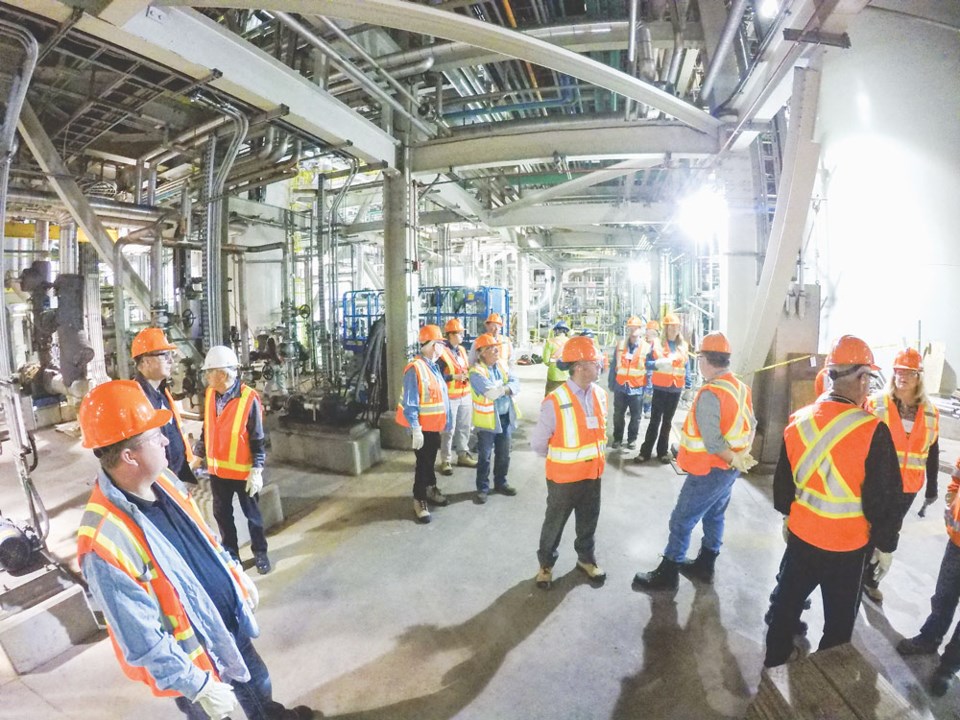SaskPower is claiming that a decision hasn’t been made on the future of Units 4 and 5 at the Boundary Dam Power Station.
Earlier this month, SaskPower president Mike Marsh said it was “highly unlikely” that SaskPower would recommend Units 4 and 5 at Boundary Dam be retrofitted with carbon capture and storage (CCS) technology. Instead, the Crown corporation would recommend natural gas as a baseload power option.
But now Dustin Duncan, the minister responsible for SaskPower, said the Crown corporation is still doing its due diligence on whether to retrofit the two units.
Once a recommendation is made, it would go to the SaskPower board of directors, and then it would come to the Crown Investment Corporations’ board and cabinet for approval.
“At this point, it hasn’t even gone to the SaskPower board, so there has not been a final decision made at all,” said Duncan.
Duncan wasn’t present when Marsh made the comments. But Duncan did say it was “unfortunate” that Marsh made those comments, because they created a lot of uncertainty, particularly for those in southeast Saskatchewan.
However, Duncan added that Marsh has clarified the comments to indicate there will be a number of factors that go into the decision.
While natural gas is viewed as the more affordable option now, Duncan said it has also been subject to wild price spikes in the past.
“Natural gas, back in 2008, 2009 and 2010, had been anywhere from a low of four dollars a gigajoule all the way up to $17 a gigajoule,” said Duncan. “We have to be competitive with other costs of electricity production, but that being said, right now, gas is selling at a very low price, and that will be a factor.”
The expectation is that natural gas prices will remain low for at least the next year, he said, but it is a commodity, and prices can swing wildly.
As for whether the price to retrofit Units 4 and 5 has gone down, Duncan said that information has yet to be presented to him. The federal government financially supported the initial CCS project at Boundary Dam, which helped lower the costs for SaskPower.
“I know there is interest from the federal government in CCS technology,” said Duncan. “Minister McKenna (federal Environment Minister Catherine McKenna) has toured Estevan and has toured the project, and so any project moving forward, we would have to see whether or not there would be an interest in doing another partnership with the federal government.”
There have been discussions with the federal government about continued investments in CCS, he said.
A decision on the future of Units 4 and 5 is expected to be at the end of this year or early next year, but Duncan noted that it doesn’t need to happen until late in 2018.
Duncan said SaskPower is close to signing an equivalency agreement with the federal government, which would give the Crown corporation more flexibility for its future power generation options and timelines.
“While at this point, a straight read of the regulations would say that for (Units) 4 and 5, the decision would have to be made in the next year or so for that end of 2019 time frame, the equivalency agreement may allow us to look at it on a fleet-wide basis, which then could potentially push the decision out further than that,” said Duncan.
Since Unit 3 at the Boundary Dam Power Station surpasses federal regulations for coal-fired generation, it could be used to offset the emissions from Units 4 and 5, which could further push back the timeline for a decision.
“Until that’s signed, we don’t know yet exactly the flexibility, but we’re hoping for flexibility with Units 4 and 5,” said Duncan.
Duncan also stressed that Marsh comments earlier this month were about Units 4 and 5, and not Unit 6 at Boundary Dam, which would also require a retrofit with CCS technology to stay online. Nor was he talking about the Shand Power Station, or Coronach’s Poplar River Power Station.
“The decision point for Shand, for Unit 6, for Poplar River 1 and 2 are pushed (further) out,” said Duncan. “It’s based on when their in-service date was.”
If the province doesn’t proceed with further retrofitting of coal-fired units with CCS technology, then Duncan said Unit 3 would remain an important contributor to electrical generation for the province.
“With the way it’s using coal, and capturing and sequestering the carbon dioxide, it’s one of the cleanest-burning fossil fuel power plants in the world,” said Duncan.
Duncan said he remains a supporter of CCS technology. It has contributed to the capture of 1.75 million tonnes of carbon dioxide. And interest in the technology remains high, with more than a dozen countries attending a symposium in Regina a few weeks ago.
“Notwithstanding the challenges that all new, first-generation technologies experience, CCS at Boundary Dam 3 has been a very good technology for doing what we’re all trying to do through different policy options, and that is to actually reduce the amount of carbon that’s going into the atmosphere,” said Duncan.
October was the best month on record for the amount of carbon sequestered, he said. (For more on October’s performance at Boundary Dam, see page A10).
But there was also a three-month shutdown for the CCS facility, so that new equipment could be installed. Duncan said it’s always a concern when a shutdown takes longer than expected, but he knows that every technology will have a period of maintenance.
“We’re going to keep working towards ensuring that with these lengthy delays, we reduce the number of them into the future,” said Duncan.




